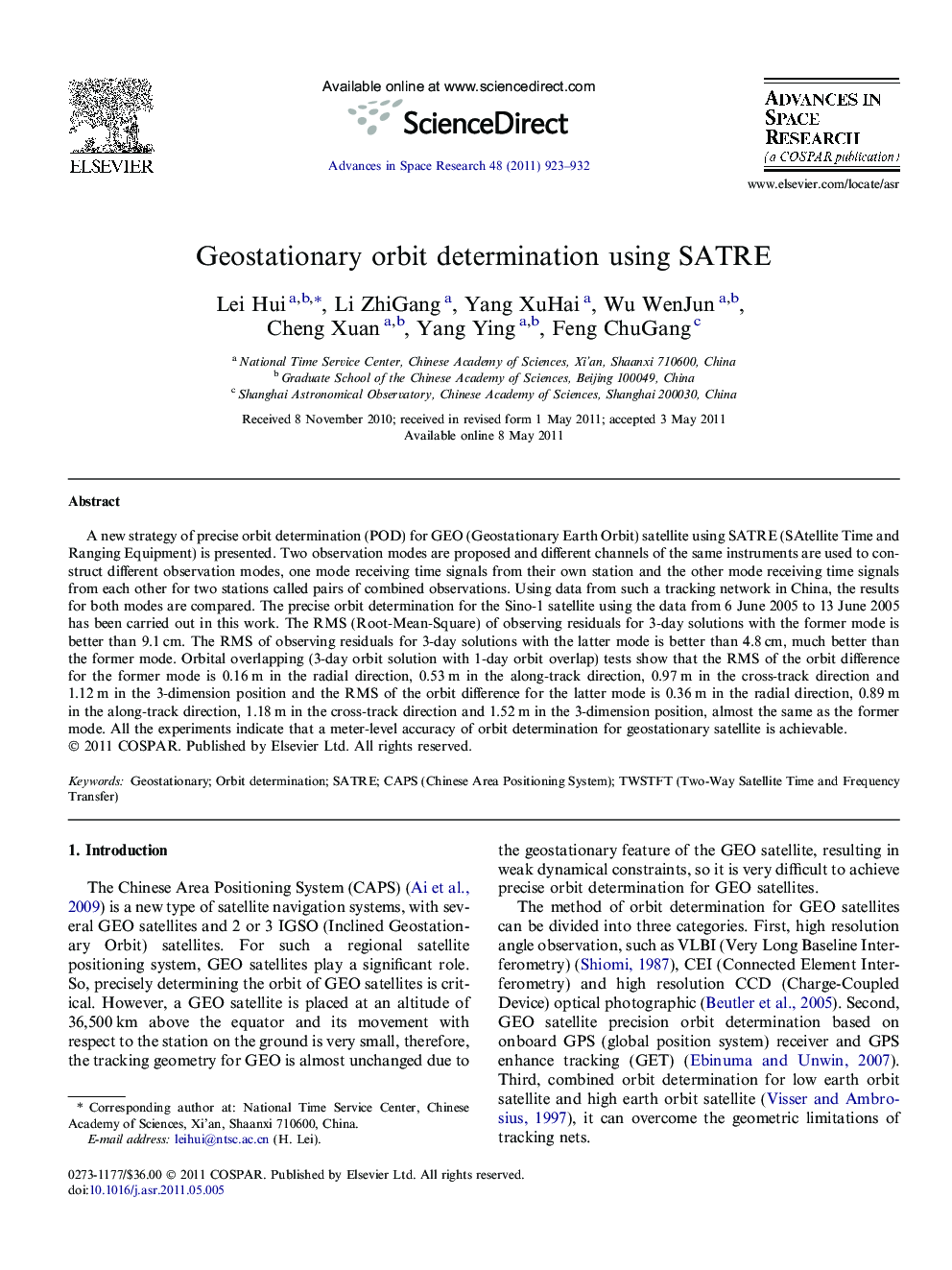| Article ID | Journal | Published Year | Pages | File Type |
|---|---|---|---|---|
| 1766333 | Advances in Space Research | 2011 | 10 Pages |
Abstract
A new strategy of precise orbit determination (POD) for GEO (Geostationary Earth Orbit) satellite using SATRE (SAtellite Time and Ranging Equipment) is presented. Two observation modes are proposed and different channels of the same instruments are used to construct different observation modes, one mode receiving time signals from their own station and the other mode receiving time signals from each other for two stations called pairs of combined observations. Using data from such a tracking network in China, the results for both modes are compared. The precise orbit determination for the Sino-1 satellite using the data from 6 June 2005 to 13 June 2005 has been carried out in this work. The RMS (Root-Mean-Square) of observing residuals for 3-day solutions with the former mode is better than 9.1Â cm. The RMS of observing residuals for 3-day solutions with the latter mode is better than 4.8Â cm, much better than the former mode. Orbital overlapping (3-day orbit solution with 1-day orbit overlap) tests show that the RMS of the orbit difference for the former mode is 0.16Â m in the radial direction, 0.53Â m in the along-track direction, 0.97Â m in the cross-track direction and 1.12Â m in the 3-dimension position and the RMS of the orbit difference for the latter mode is 0.36Â m in the radial direction, 0.89Â m in the along-track direction, 1.18Â m in the cross-track direction and 1.52Â m in the 3-dimension position, almost the same as the former mode. All the experiments indicate that a meter-level accuracy of orbit determination for geostationary satellite is achievable.
Keywords
Related Topics
Physical Sciences and Engineering
Earth and Planetary Sciences
Space and Planetary Science
Authors
Lei Hui, Li ZhiGang, Yang XuHai, Wu WenJun, Cheng Xuan, Yang Ying, Feng ChuGang,
